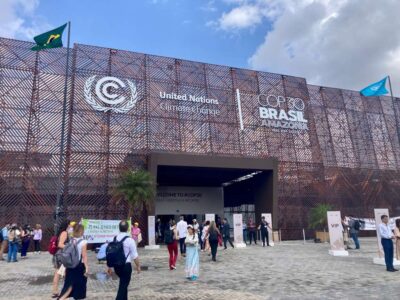Investment Models for Climate Infrastructure Implementation
Exploring avenues for implementing publicly-supported climate solutions.
This month’s federal budget and policy legislation rescinded billions of dollars in clean energy and climate-related infrastructure investments and halted the progress of many projects already underway, including major tax incentive and grant programs focused on wind and solar energy, vehicle electrification, and domestic manufacturing. A subsequent executive order further cemented the federal government’s shift away from supporting climate-related investments.
Transformative levels of capital investment to implement climate solutions were urgently needed even with Inflation Reduction Act and Bipartisan Infrastructure Law programs–many of which funded locally-led investments centering public participation in the energy transition–in place.
The headwinds facing climate efforts in the U.S. call for innovative approaches to generating capital for climate-related infrastructure. With the bill’s elimination of many incentives for EVs, wind, and solar, alternative funding and financing pathways are urgently needed for climate-related infrastructure projects. Given the significant social and economic impacts associated with climate infrastructure investments, the most effective new investment avenues will be those with a high level of public participation and support in the project process.
CLEE’s new report, Investment Models for Climate Infrastructure Implementation: Supporting Public Participation in Climate Investments, explores three investment models for climate infrastructure projects with a focus on the ways that public engagement in investment processes can support different infrastructure types. These strategies are:
- Bond financing: the issuing of long-term loans by local and state governments to finance infrastructure assets.
- Special district financing: financing infrastructure improvements within the boundaries of a special district, used by municipalities across the U.S.
- Community investment trusts: joint investment trusts that result in local ownership of real estate by community residents.
These investment models involve a spectrum of public participation, ranging from voter approval to full community ownership. As a vehicle of local governance and public engagement, public participation in investment processes can be an essential component to support for climate projects and understanding of their social and economic implications.
The report conducts an initial assessment of these investment strategies’ applicability to funding three types of climate infrastructure projects. The climate infrastructure types assessed include:
- Electric vehicle charging infrastructure: The charging stations that fuel electric vehicles (EVs).
- Offshore wind infrastructure: Offshore wind turbines and supporting systems that generate electricity through oceanic wind power transmitted to the electrical grid.
- Direct air capture (DAC) infrastructure: A form of carbon dioxide removal that directly extracts CO2 from the atmosphere and permanently stores it.
CLEE analyzed these three infrastructure project types due to their varied size and scale (ranging from small, distributed projects to large-scale industrial sites), costs, public benefits (from fueling infrastructure access to clean power), and local impacts (such as land development and jobs), which provide multiple lenses through which to assess investment options.
Through its initial scoping analysis, the report finds that EV charging infrastructure is most suitable for implementation through these investment channels today due to its variable scale, revenue generation potential, and tangible community benefits. For example, an EV charging infrastructure-focused community facilities district could be tailored to serve a dense residential area with limited off-street parking or high commercial traffic, with the new amenity enhancing local property values and supporting the underlying bond. We also identify several key areas for future research in the application of innovative investment models to large-scale climate infrastructure such as transmission and port investments to support offshore wind development.
This report was developed through CLEE’s EV Equity Initiative, which aims to build locally tailored, community driven, and replicable approaches to the development of EV and mobility infrastructure in underserved communities in California and U.S. cities. It also forms part of CLEE’s new initiative supporting equitable climate infrastructure investment, including research and partnerships on models of community oversight, governance, and benefits for climate infrastructure projects to achieve equity and economic development goals. Next month, the initiative will release an analysis of California’s community-centered climate investment programs.
The full report can be accessed here.







Reader Comments